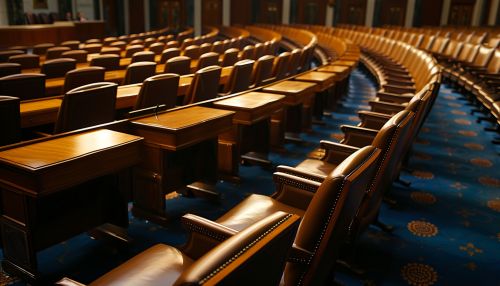United States House of Representatives
Overview
The United States House of Representatives is one of the two chambers of the United States Congress, the other being the United States Senate. It is composed of representatives who sit in congressional districts allocated to each of the 50 states on a basis of population as measured by the U.S. Census, with each district entitled to one representative. Since its inception in 1789, all representatives are elected popularly.


Composition and powers
The House of Representatives is made up of 435 elected members, divided among the 50 states in proportion to their total population. In addition, there are 6 non-voting members, representing the District of Columbia, the Commonwealth of Puerto Rico, and four other territories of the U.S. The presiding officer of the chamber is the Speaker of the House, elected by the Representatives. The Speaker and other floor leaders are chosen by the Democratic Caucus or the Republican Conference, depending on whichever party has more voting members.
The House has several powers assigned exclusively to it, including the power to initiate revenue bills, impeach federal officials, and elect the President in the case of an electoral college tie.
History
The House of Representatives was established as a result of the Great Compromise during the drafting of the United States Constitution. The Constitution mandated that the House be composed of Representatives who are chosen every second Year by the People of the several States. The first meeting of the House of Representatives was held in New York City on March 4, 1789, establishing the United States Congress.
Procedure
The House follows a set of rules to conduct business, with the Rules of the United States House of Representatives being the main guide for this process. These rules cover aspects such as the manner of debating, the process for passing a bill, and the roles of the standing committees.
Standing committees
The House of Representatives maintains 20 standing committees, each of which has jurisdiction over specific policy areas ranging from agriculture to veterans' affairs. These committees consider bills and issues and oversee agencies, programs, and activities within their jurisdictions.
Current composition
As of the 117th Congress, the House of Representatives is composed of 222 Democrats, 213 Republicans, and four vacant seats. The current Speaker of the House is Nancy Pelosi.
